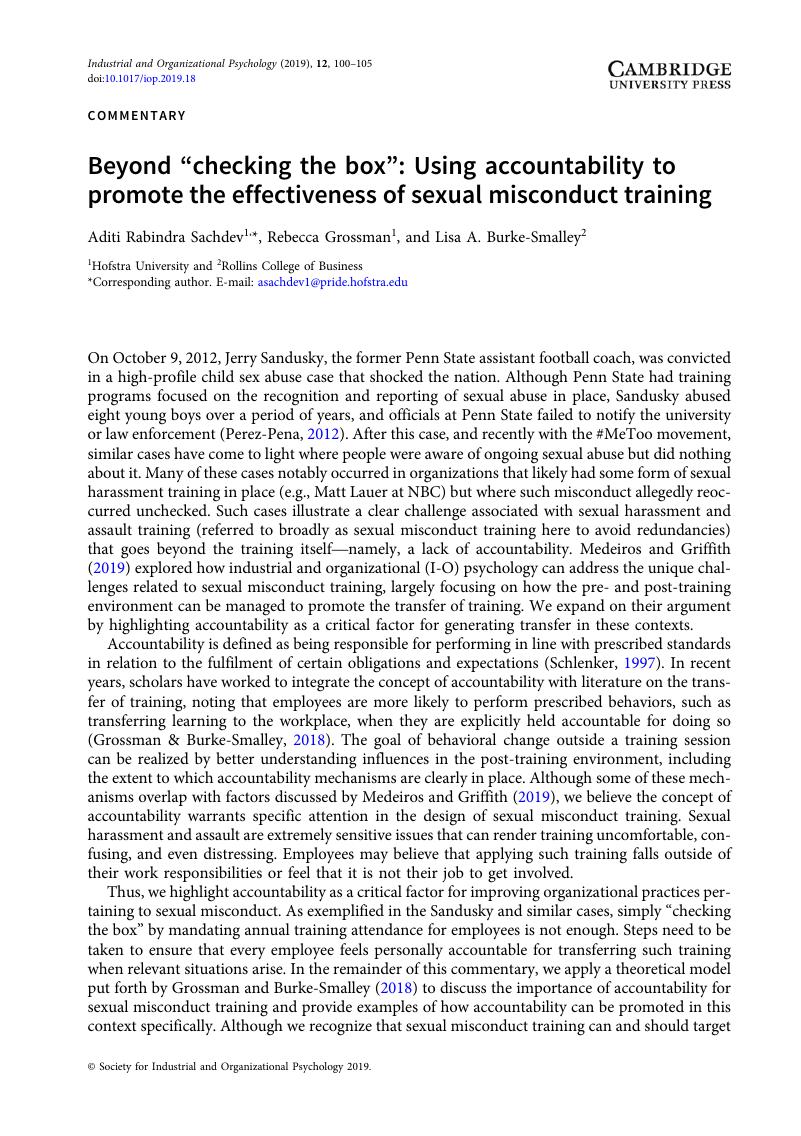Crossref Citations
This article has been cited by the following publications. This list is generated based on data provided by Crossref.
Atwater, Leanne E.
Sturm, Rachel E.
Taylor, Scott N.
and
Tringale, Allison
2021.
The era of #MeToo and what managers should do about it.
Business Horizons,
Vol. 64,
Issue. 2,
p.
307.
Spiliopoulou, Ashleigh
and
Witcomb, Gemma L.
2023.
An Exploratory Investigation Into Women's Experience of Sexual Harassment in the Workplace.
Violence Against Women,
Vol. 29,
Issue. 9,
p.
1853.



